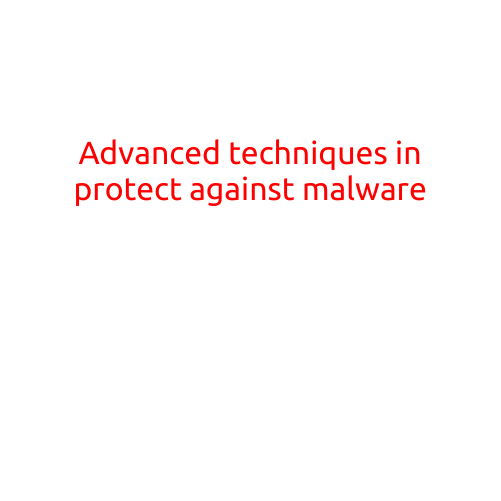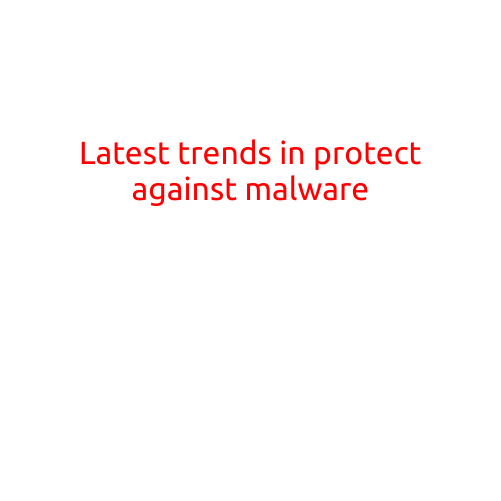
Advanced Techniques in Protecting Against Malware
In today’s digital age, malware has become a major concern for individuals and organizations alike. With the rapid growth of cyberattacks, it’s essential to have a robust security system in place to protect against these malicious threats. In this article, we’ll explore advanced techniques in protecting against malware, helping you to stay one step ahead of cybercriminals.
1. Implement a Next-Generation Firewall (NGFW)
Traditional firewalls are no longer effective against modern malware. NGFWs provide advanced threat detection, application control, and intrusion prevention capabilities, making them a crucial component in any malware protection strategy.
2. Deploy Advanced Endpoint Protection Software
Endpoint protection software, such as anti-malware solutions, should be equipped with advanced features like artificial intelligence, machine learning, and sandboxing to detect and remove malware. These solutions should also include features like behavioral analysis, which examines system activity to identify malicious patterns.
3. Use Behavioral Detection Systems
Behavioral detection systems analyze system activity, monitoring for suspicious behavior, such as unusual login attempts, network traffic, and file modifications. These systems can quickly identify and respond to malware outbreaks, even if they’re using evasive tactics.
4. Implement Network Traffic Analysis
Network traffic analysis involves monitoring and analyzing network traffic to detect and prevent malware attacks. This includes monitoring for unusual communication patterns, such as communication with known malicious servers or command and control (C2) centers.
5. Utilize Cloud-Based Security Solutions
Cloud-based security solutions provide real-time threat intelligence and advanced threat detection capabilities. These solutions can analyze vast amounts of data to identify malware patterns and provide real-time alerts to security teams.
6. Implement a Bug Bounty Program
Bug bounty programs incentivize ethical hackers to identify and report vulnerabilities in applications and systems. This proactive approach helps identify potential entry points for malware and allows for swift remediation.
7. Conduct Regular Vulnerability Assessments
Regular vulnerability assessments help identify weaknesses in systems and applications, allowing for prompt remediation and reducing the risk of malware exploitation.
8. Use Secure Coding Practices
Developers should follow secure coding practices, such as input validation, error handling, and secure coding guidelines, to reduce the risk of vulnerabilities being exploited by malware.
9. Implement a Secure Configuration Management System
Configuration management systems ensure that systems and applications are configured correctly, reducing the risk of default settings being exploited by malware.
10. Stay Up-to-Date with Patches and Updates
Regularly patching and updating systems, applications, and software ensures that known vulnerabilities are fixed, reducing the risk of malware exploitation.
Conclusion
Malware is a constantly evolving threat, and it’s essential to stay ahead of the curve by implementing advanced techniques and technologies. By incorporating these strategies into your security arsenal, you’ll be better equipped to protect against malware and keep your data and systems safe.
Additional Resources:
- Center for Internet Security (CIS): CIS provides a comprehensive resource for malware protection, including guidelines, benchmarking, and research publications.
- Open Source Security Information Sharing (OSSIS): OSSIS provides a platform for sharing threat intelligence and information on malware outbreaks and vulnerabilities.
- IEEE Security & Privacy: IEEE Security & Privacy is a premier journal for security research and advances in malware detection and prevention.





